Limestone loving plants
Chinquapin oak, Quercus muehlenbergii

Chinquapin oak is native to the greater midwest from the deep south through the great plains. Rarely a dominant tree, it associates with other oaks and provides a food source of acorns to many animal species.
Blue ash, Fraxinus quadrangulata
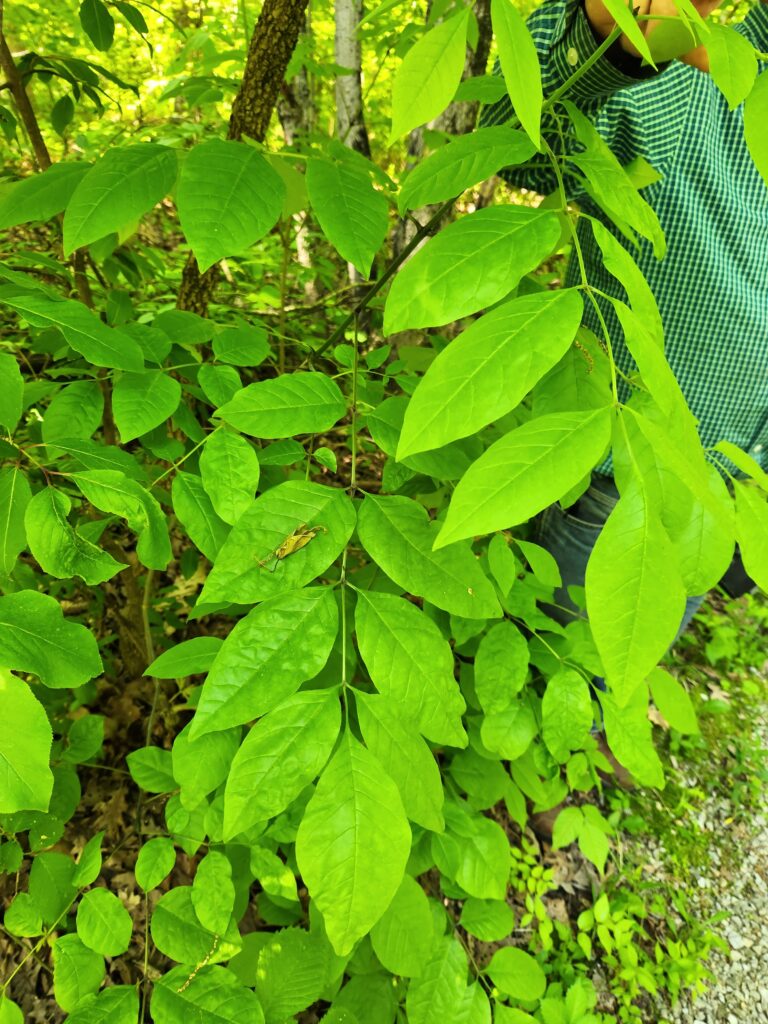
Blue ash is a tree native to the midwest; from Oklahoma to Michigan. The leaves are a vital source of food for frog tadpoles, and the tree is the least threatened of the ashes by the emerald ash borer invasive.
Redbud, Circus canadensis
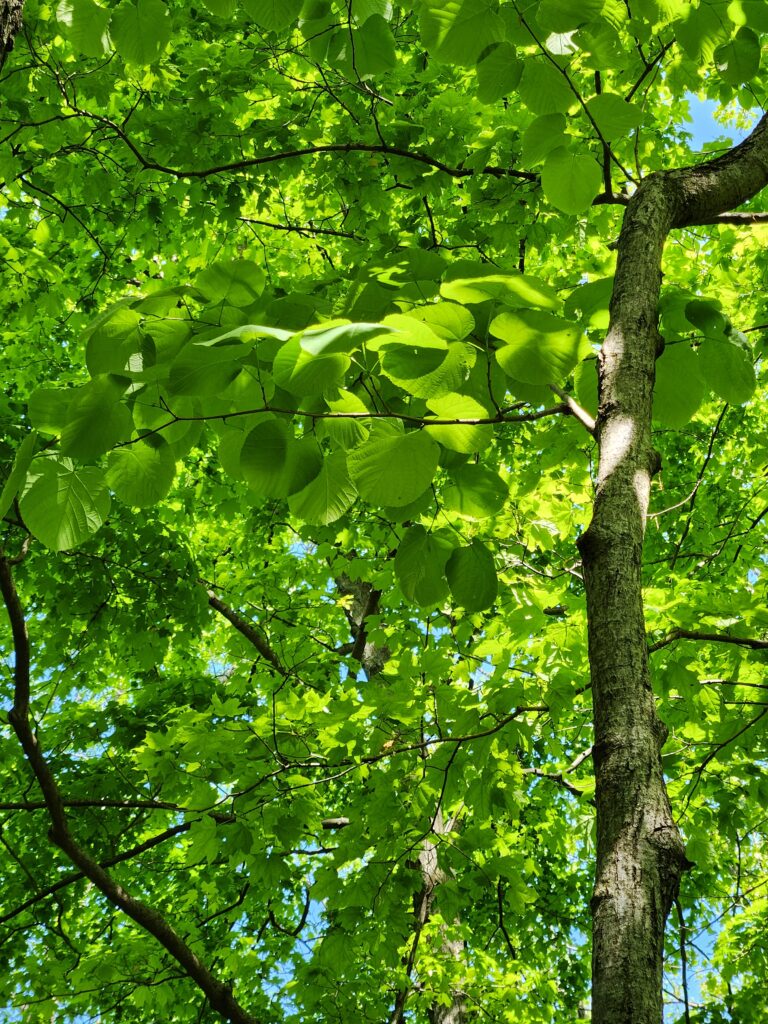
Redbud is a tree native to Eastern North America, from the south of Michigan all the way south to central Mexico, but grows as west as California and north into Canada. Many lepidoptera species use the leaves as a food source.
Shagbark hickory, Carya ovata
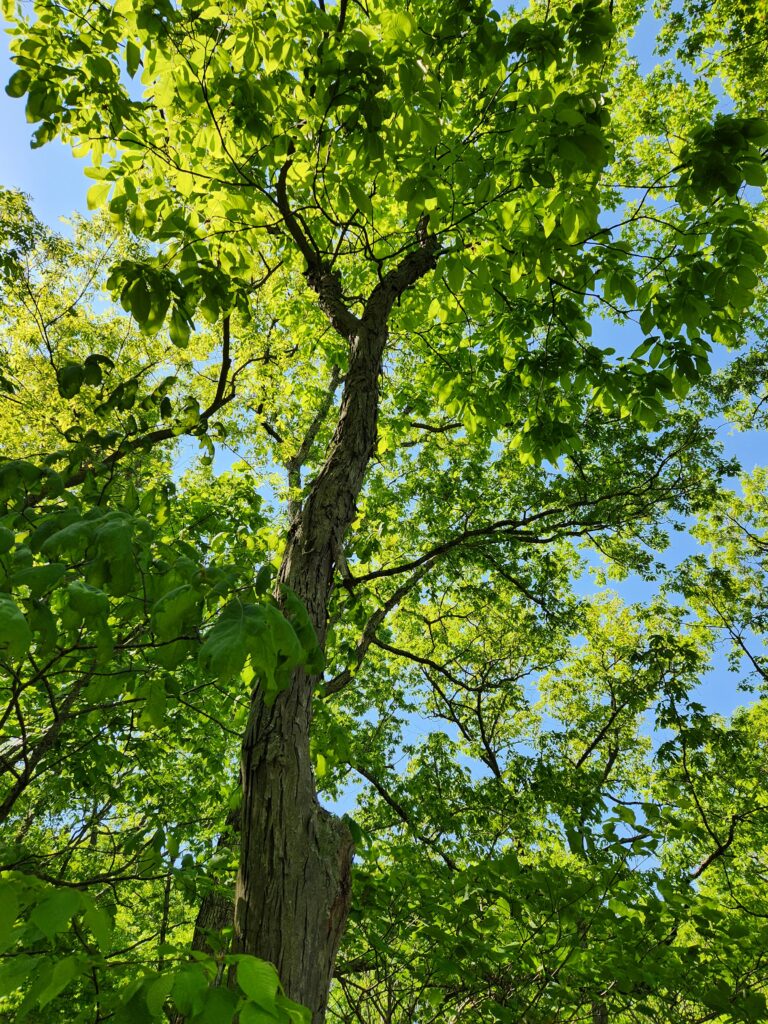
The shagbark hickory is native to eastern North America and south eastern Canada. Only mature trees exhibit shaggy bark. The nuts are a significant source of food to a variety of animal species.
Invasive plants
Amur Honeysuckle, Lonicera maackii
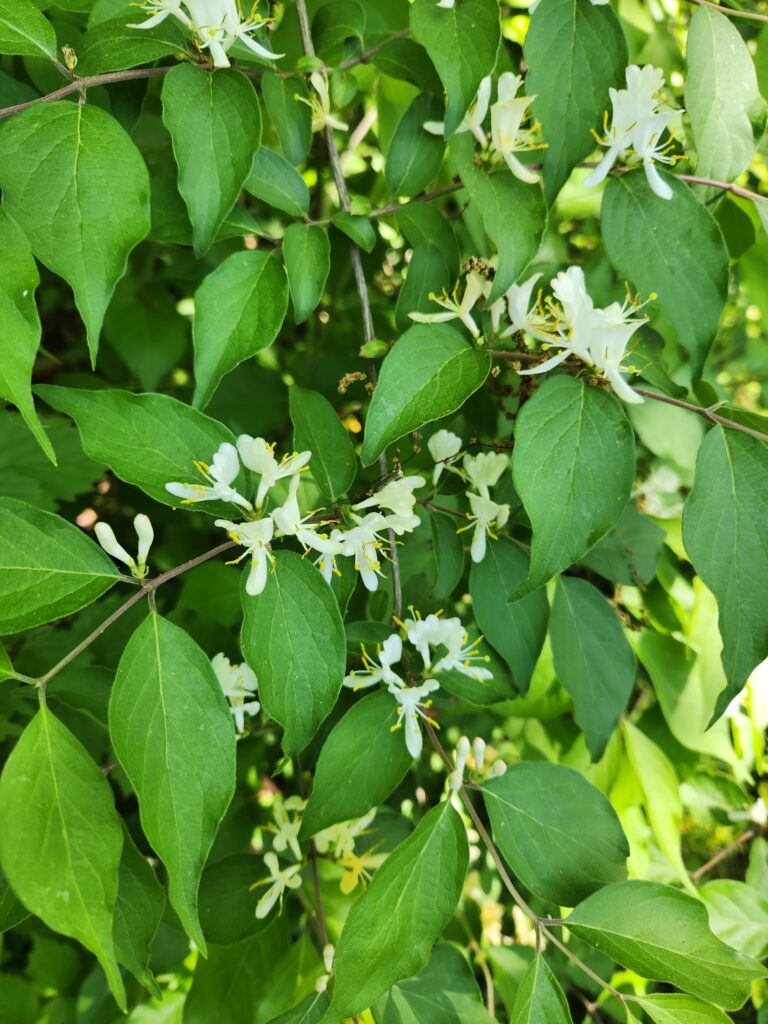
First introduced from northeast Asia to the Ohio as an ornamental in the 1950’s, honeysuckle’s early phenology, rate of spread, and allelopathic properties give it a competitive edge against native plants as an invasive.
Garlic Mustard, Alliaria petiolata
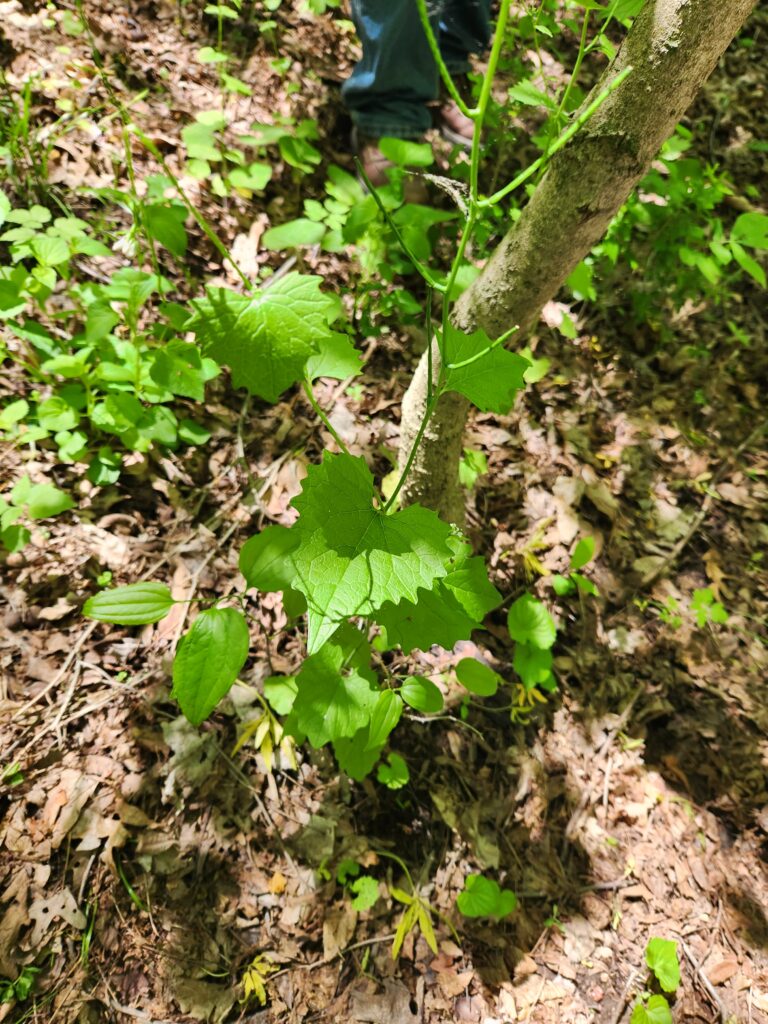
First introduced to the US for medicinal properties and erosion control from Europe and Asia in the 1800s, this hardy invasive dominates woodland understories and has become naturalized.
Plants with inflorescences
Great waterleaf, Hydrophyllum appendiculatum
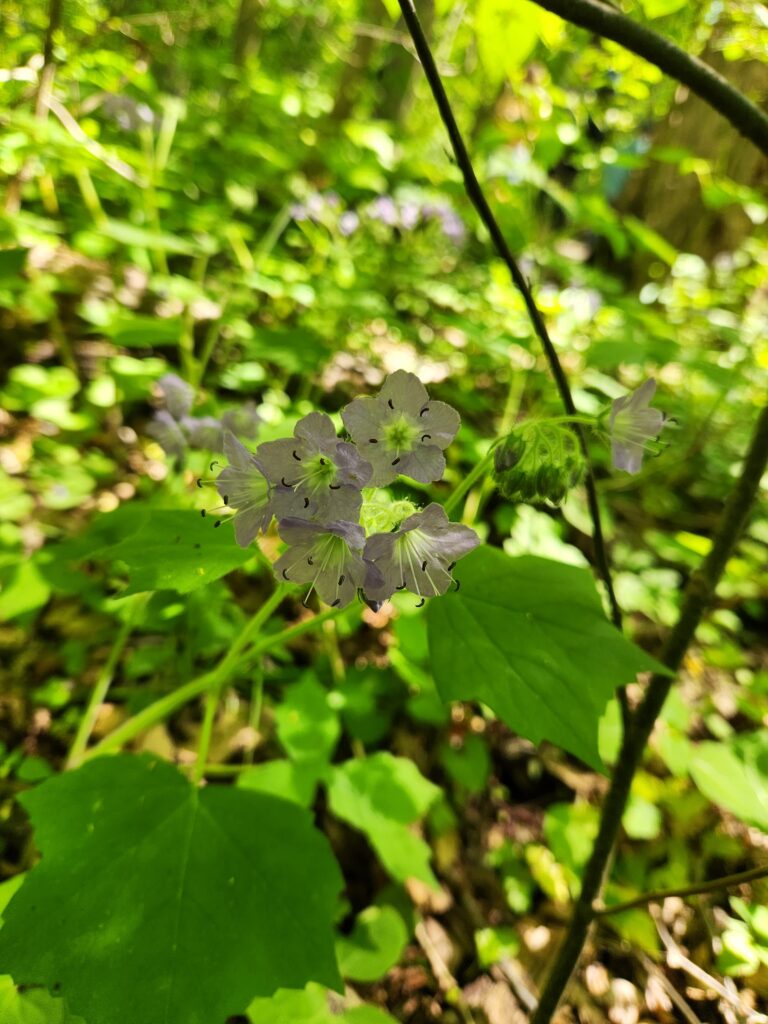
Golden alexanders, Zizia aurea
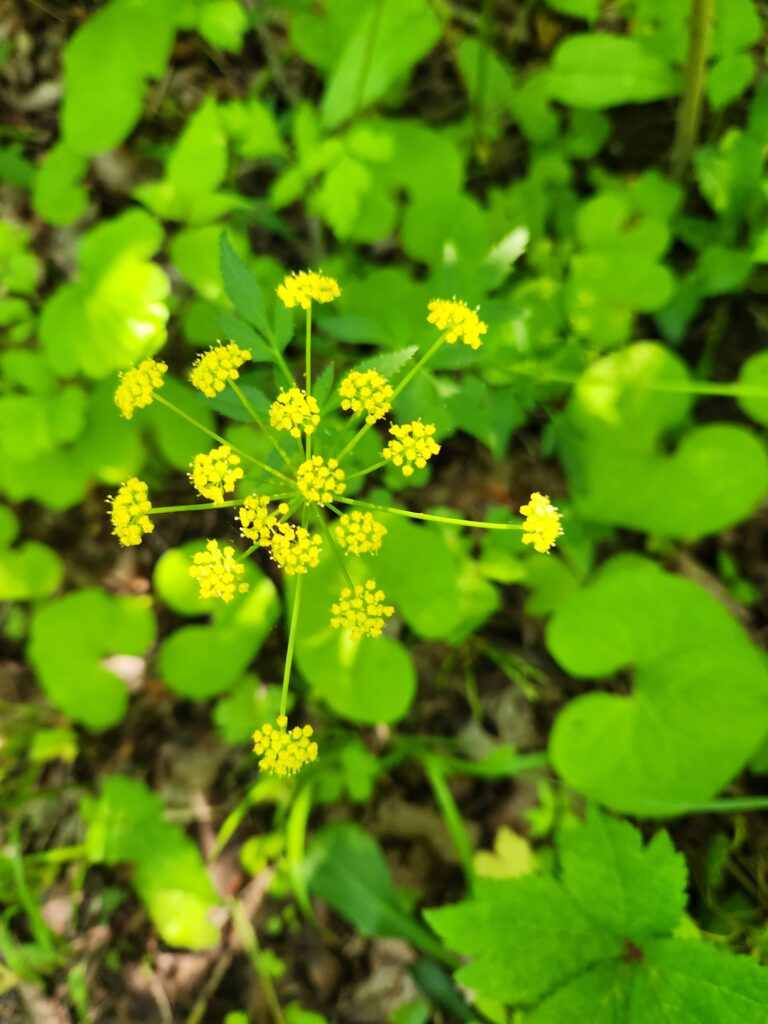
Geobotany
The geology of Ohio can be simplified down to a layer of limestone rock underlaying the west, and a layer of sandstone and shale underlaying the east. Limestone erodes quickly in comparison to hard sandstone, and thus Western Ohio is significantly flatter in comparison to the East, characterized by valleys made by erosion penetrating between sandstone to the less-resistant shale.
The original sequence of rock in Ohio was limestone overlain by shale overlain by sandstone, and tilted so that the oldest rock in the west was limestone and east sandstone. In preglacial Ohio, the massive Teays river accomplished flowed through and eroded rock on each side over the course of 200 million years until filled or redirected during the glacial period.
During glaciation in Ohio, glaciers moved through the west and were stopped upon reaching the rocky terrain of the East. This boundary is pictured below:

The Ice Age in Ohio | Ohio Department of Natural Resources (ohiodnr.gov)
Glacial till, a mixture of sand, silt, clay, and boulders picked up and deposited by melting ice, was thus mostly deposited onto Ohio’s western half. The gravel deposited like a sheet was full of gravel and high amounts of clay.
In connection to botany, where plants can grow is influenced by substrate type. Western Ohio has limy and nutrient available substrate that is poorly permeable and aerated due to clay. In eastern Ohio, the substrate boasts less nutrient availability, but water is able to percolate down the sandstone and maintain a moist environment.
Plant species limited to limy substrates include redbud, hackberry, cinquapin oak, blue ash, and hawthorn. Ohio plants that grow in high-lime till include sugar maple, beech, red oak, shagbark hickory, and white ash. Plants limited to acidic soils include hemlock, sweet buckeye, chestnut oak, sourwood, and pitch pine.
Sweet buckeye occurs exclusively outside of the glacial boundary, and occurs less far North than hemlock, which, while still in unglaciated areas, grows in moist and wet climates including those North. The distribution of rhododendron is connected to the ancient Teays river, remaining after migrating up the river to southern Ohio and after the Teays river was blocked.
